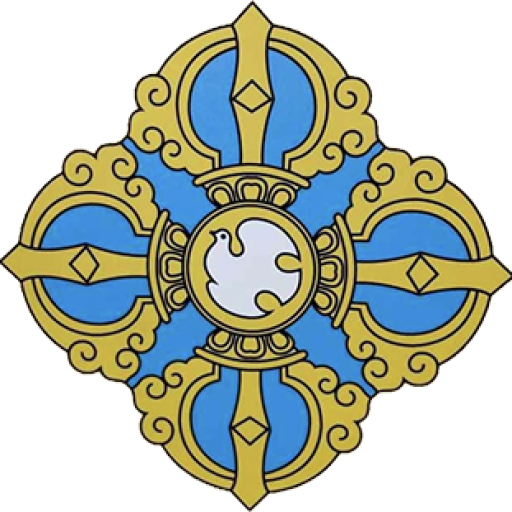An international scholarly conference “Buddhism and Archaeology” was held at the Gandan Tegchenling Monastery, the Center of Mongolian Buddhists on 6 November 2023. This was the second scholarly conference jointly co-organized by the Institute of Archaeology of the Mongolian Academy of Sciences and the Gandan Tegchenling Monastery.
More than 30 papers were presented at the conference by some 40 scholars and researchers from Mongolia, Russian Federation, People’s republic of China, Japan and the Republic of Korea.
An archaeological exhibition was also displayed for public in the Battsagaan Temple of the Gandan Tegchenling Monastery.
Dr. N. Erdene-Ochir, Secretary of the Institute of Archaeology, speaking about an ancient Buddhist temple discovered anew in Mongolia said “We carried out archaeological excavation at a historical site called ‘Khar Tune Ord,’ the ruins of Turgen or the original palace of Khereid Wang along the banks of Tuul river in the area of Songino near Ulaanbaatar and carried out extended initial research. There we discovered the remains of an ancient Buddhist temple which was built around the sixteenth century. Every year in fall, we review the outcome of our joint research and organize a conference under the theme ‘Buddhism and Archaeology.’ Thanks to our archaeological excavation, we have been able to find ruins of Buddhist temples and monasteries, and related artefacts.”
The conference gave the opportunity to learn about the registration, preservation, protection of Buddhist relics related to the history of ancient empires and states of the Mongols. The conference also made it possible to learn about the outcome of scientific research conducted by Mongolian and foreign scholars covering a broad gamut of areas, such as archaeological and historical source materials, ancient writings, cultural heritage, their preservation and restoration, architectural structure, design, construction decorations and ornaments, and the last conference was not an exception either.
Historians and scientists believe that Buddhism spread and flourished in Mongolian during three different historical periods. Research papers presented at the conference revealed that the first period of the spread of Buddhism was during the rule of the Huns or the Xiōngnú empire that existed on the territory of present-day Mongolia in BCE 209 to CE 93. At present, there are no hard evidences to prove the above, however, it can be corroborated with the help of archaeological studies.
In recent years, Mongolian archaeologists have discovered ruins or Buddhist temples and monasteries in many different parts of the country. Excavation and research have been carried out at some of them, leading to massive new finds, shedding new light on the spread of Buddhism, its scale and scope, and ever new evidences, which had not been recorded in any written sources, according to Dr. G. Eregzen, the Director of the Institute of Archaeology.
A joint project “Core of Heritage and Culture,” which is being jointly implemented by the Institute of Archaeology of the Mongolian Academy of Sciences and the Erdem Institute of Culture of the Gandan Tegchenling Monastery with financial support of Golomt Bank of Mongolia aims to subject monuments related to Buddhism, that are being found from the territory of Mongolia, to archaeological study, and draw conclusions after their thorough study.
Artefacts and objects that are found within the framework of the archaeological research and excavations, are kept at the Institute of Archaeology, which are transferred and handed over to the relevant museums, and as of today, the Institute has more than 200 thousand such archaeological finds, cultural and other objects.
An exhibition of artefacts and objects found as a result of archeological excavations in recent years were on public display at a special exhibition. From among the rare excavated objects and artefacts on display, on particular interest are the objects excavated from the ruins of the main monastery built by Kharkhul Khan on the banks of Khanui River in Erdenemandal soum of Arkhangai province, which most likely could be a very ancient Buddhist monastery appertaining to a very early period in the history of Mongolia.
On display at the exhibition were some very ancient artefacts and objects found from the ruins of Shagjaa Buddhist Monastery built during the reign of Monkh Khan, the fourth Khan of the Great Mongol Empire (June 1,1251 to August 11,1259), Buddhist artefacts appertaining to the seventeenth century, as well as rare objects belonging to Mother Queen Dondogdulam, who was the wife of the Eighth Bogd Khan of Mongolia (She was born in the Year of Blue Dog or 1874 in the Khuvchiin Jonon Beis Banner of Setsen Khan aimag).
Archaeological artefacts and objects that were displayed at Gandan Tegchenling
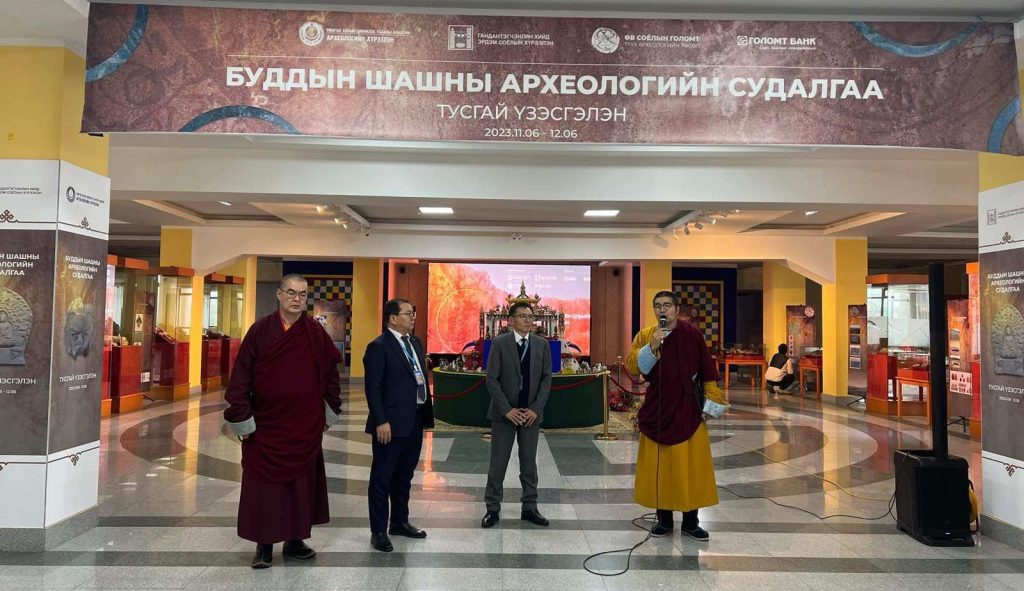
Inauguration of the exhibition “Buddhism and Archaeology”
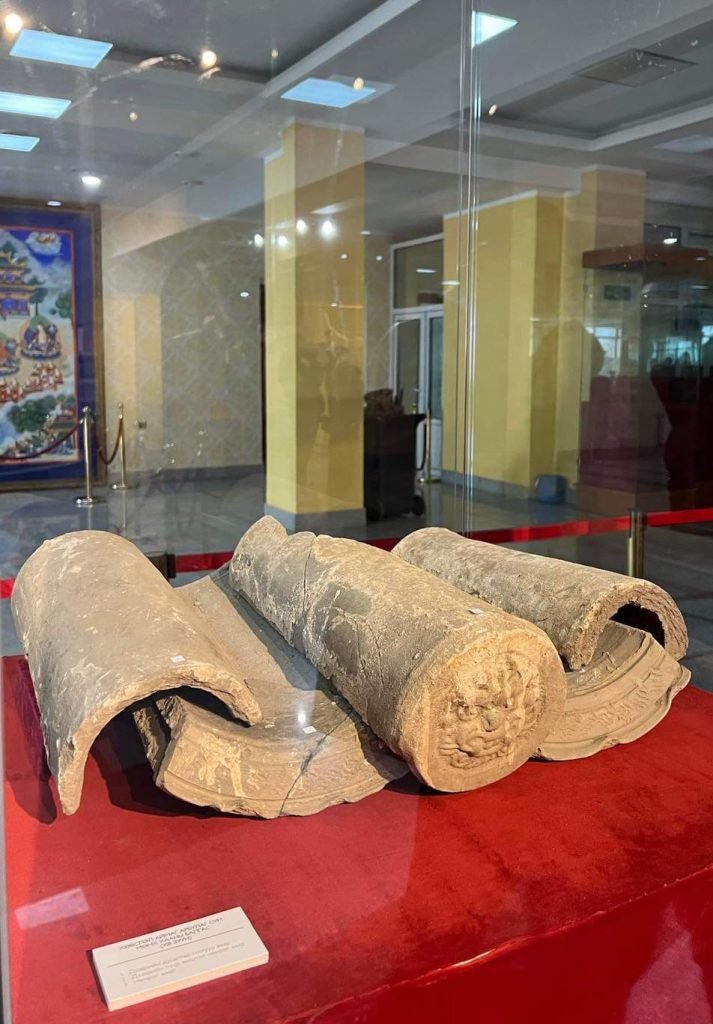
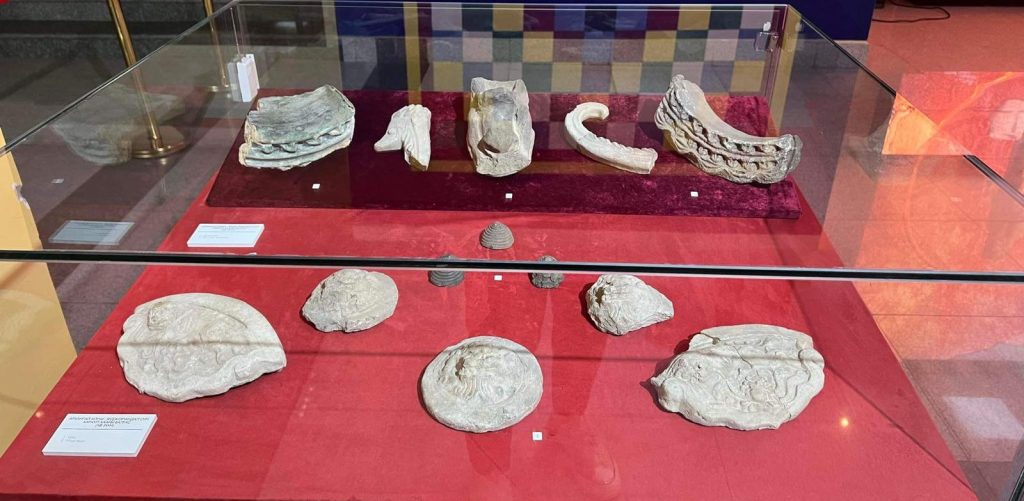
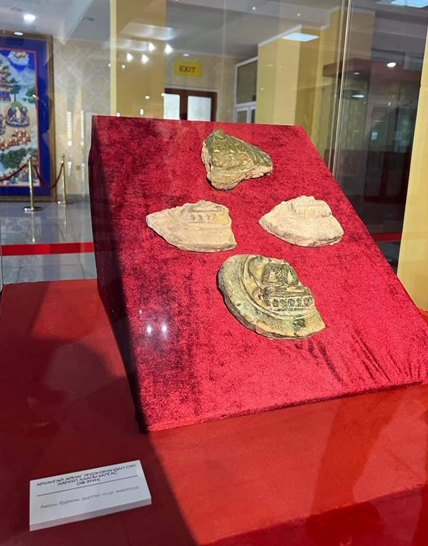
Archaeological finds – building materials, especially, roof tiles of Buddhist temples and monasteries discovered during the excavation
Monastery, the Mongolian National Center of ABCP, the result of a joint project with the Archaeological Institute of the Academy of Sciences of Mongolia represented different period of Buddhism in the country.
Story adapted from news.mn and montsame.mn sites and photos courtesy of the Institute of Archaeology, Mongolian Academy of Sciences
